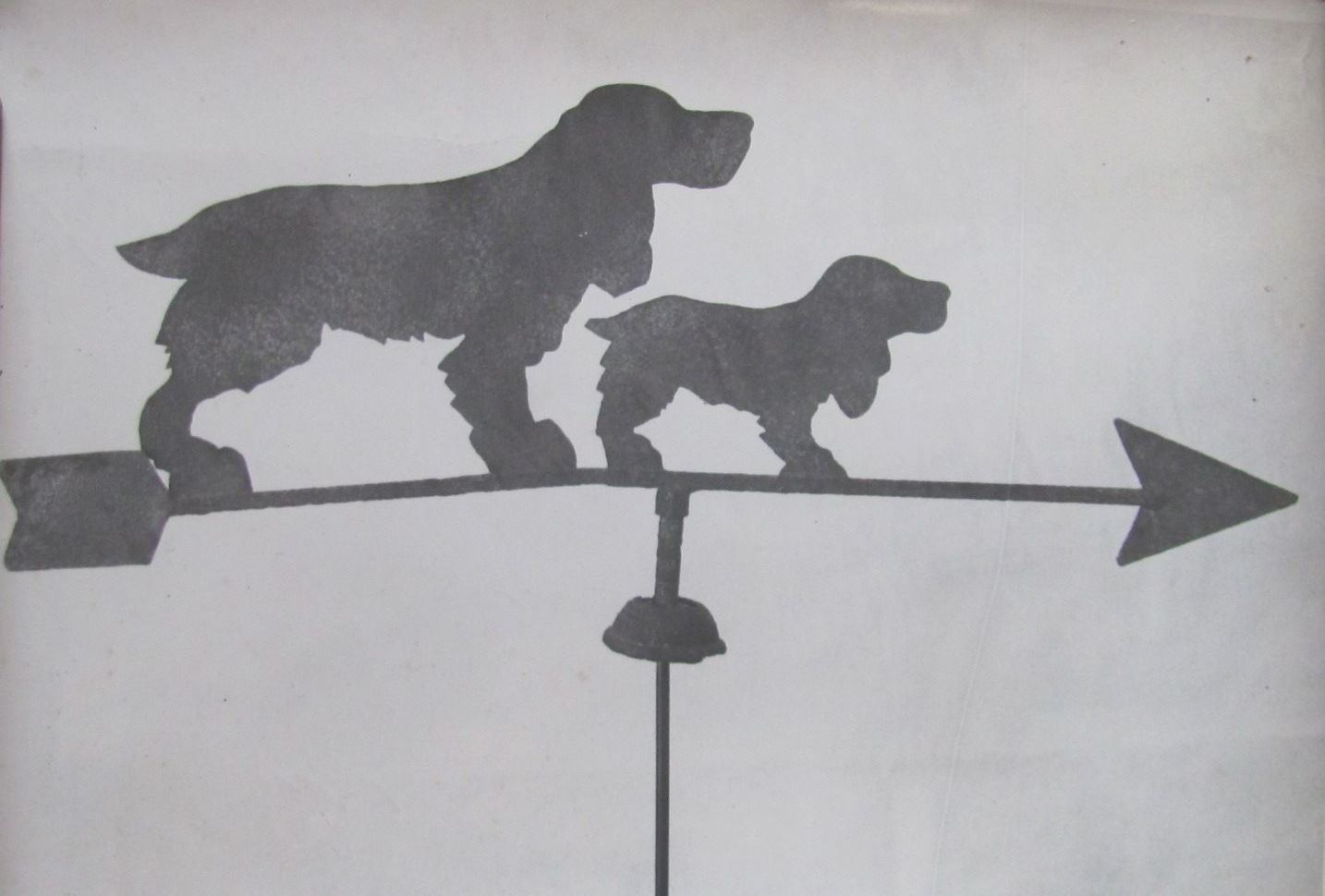
Last week, I wrote about factory-made weathervanes of the 19th century. Continuing on that subject are blacksmith-made vanes and those made by weathervane farmers. Today, you can add to this list those who are laser cutting sheet metal to make reproduction vanes. Any individual handwork is long absent. There are more fake blacksmith-made vanes on the market than real vanes. As a decorative object for reasonable money, these are a fine accessory to have, and I would recommend, but not for the hundreds of dollars I see these vanes offered at.
Blacksmith vanes
Blacksmith vanes date back before factory vanes were introduced in about 1850. They were produced by individual blacksmiths with a wide range of subjects, styles, and skill levels.
Most will know there’s a difference between steel and iron. Nineteenth-century blacksmith vanes are made of iron, not sheet steel of the 20th century. It is important for collectors to know this to avoid making costly mistakes.
Early 19th-century iron was not as pure as iron produced today. When the blacksmith heated and hammered the iron, he left his fingerprints and small hammer strikes. Sometimes on one side of the vane the blacksmith had a structural iron brace fastened to the vane to strengthen it. This reinforcing brace may be 3/8 inch to 1/2 inch wide. If the vane is a horse, there might be a brace across the body, up the neck, and down the legs.
If you study a real blacksmith vane, you will notice there are no sharp edges anywhere. An original has been exposed to weather and erosion for 100 years or more. Vanes of modern creation will have sharper edges.
Years ago, I was picking on the road from Westminster West to Putney. There was a large barn with the best blacksmith-made horse vane I have ever seen. It was quite large and folky as hell. I tried to buy it without success. Every picker knew of it and tried to buy it. A vane like this will hold its value.
20th century
In the early 1980s, as weathervane prices rapidly increased, fake blacksmith vanes began to show up at auction. Making iron appear old is not difficult. A completed vane was buried in a manure pile. The manure would eat into and discolor the metal, and to the unwary looked genuinely old. This is why we use the word “fake.” It is done to deceive.
Weathervane farmers
“Weathervane farmer” was a term I first heard in the early 1980s. These were people grinding out sheet metal vanes. I never saw a weathervane farm, but did hear of them. The farmer would cut out a bunch of vane profiles – horses, pigs, and other figures. After the manure treatment, or sometimes with the aid of acid, they were ready to be exposed to the weather.
The farmer would place the vanes on a post where the weather could affect them. There might have been 50 vanes on a half-acre lot. One or two hot summers, followed by winter’s ice and snow, the vanes were now ready to market. Unsuspecting buyers fell for these fake vanes. Today they have reappeared on the market as generational collections have changed hands. There’s a new group of unsuspecting buyers.
Novelty vanes
Novelty vanes are another group of individual-made vanes. Most novelty vanes date from the 1930s-1950s. These are not folky at all, but more realistic. The photo with this article is one such vane. The detail is very good, but would not make a collector reach deep in his pocket to buy. I would classify it as “cutesy.” Folky is by far the best.
This week’s old saying I heard years ago. Two men were discussing if an antique was original or not when one said, “You can’t be a little bit pregnant.”